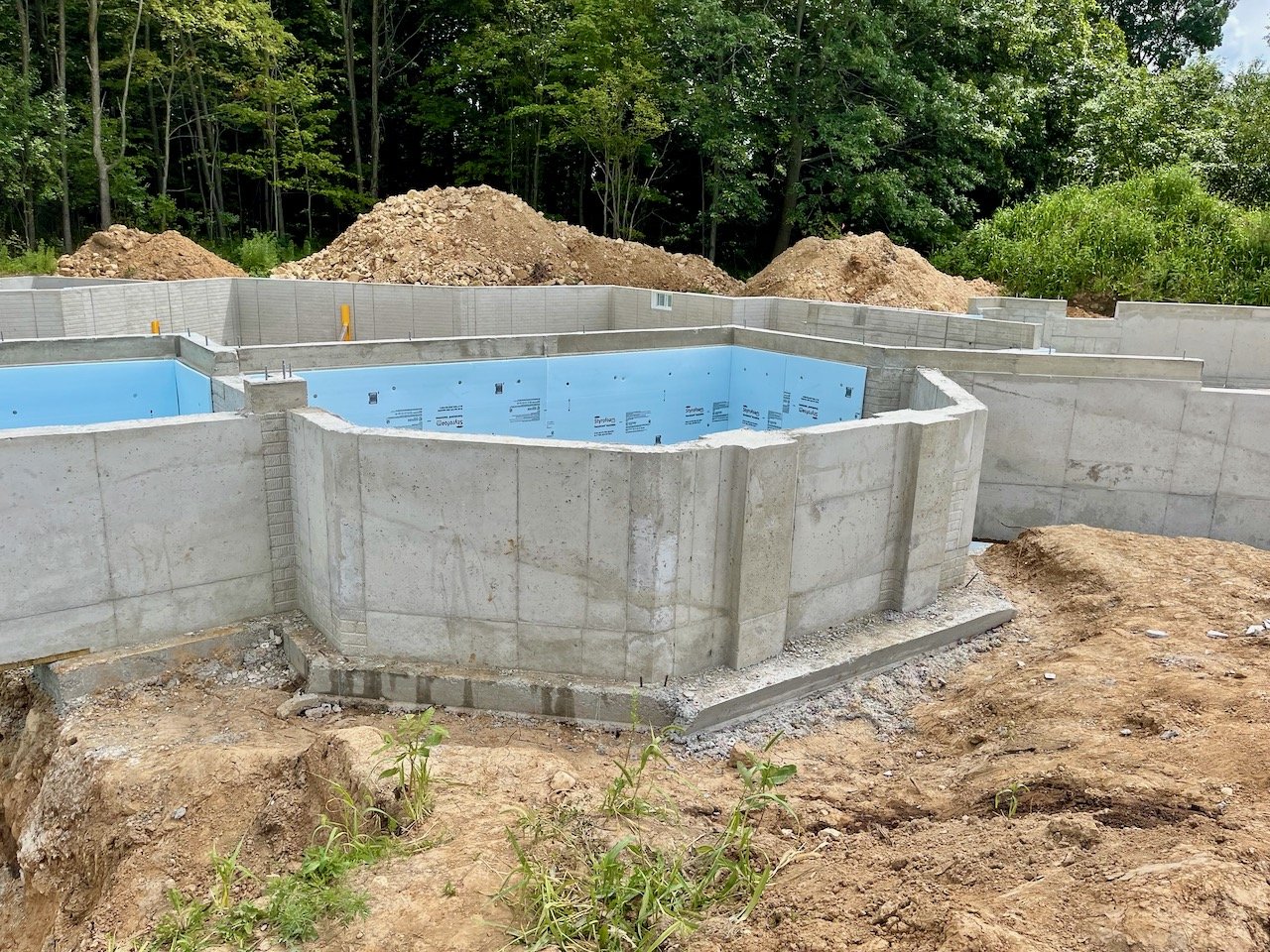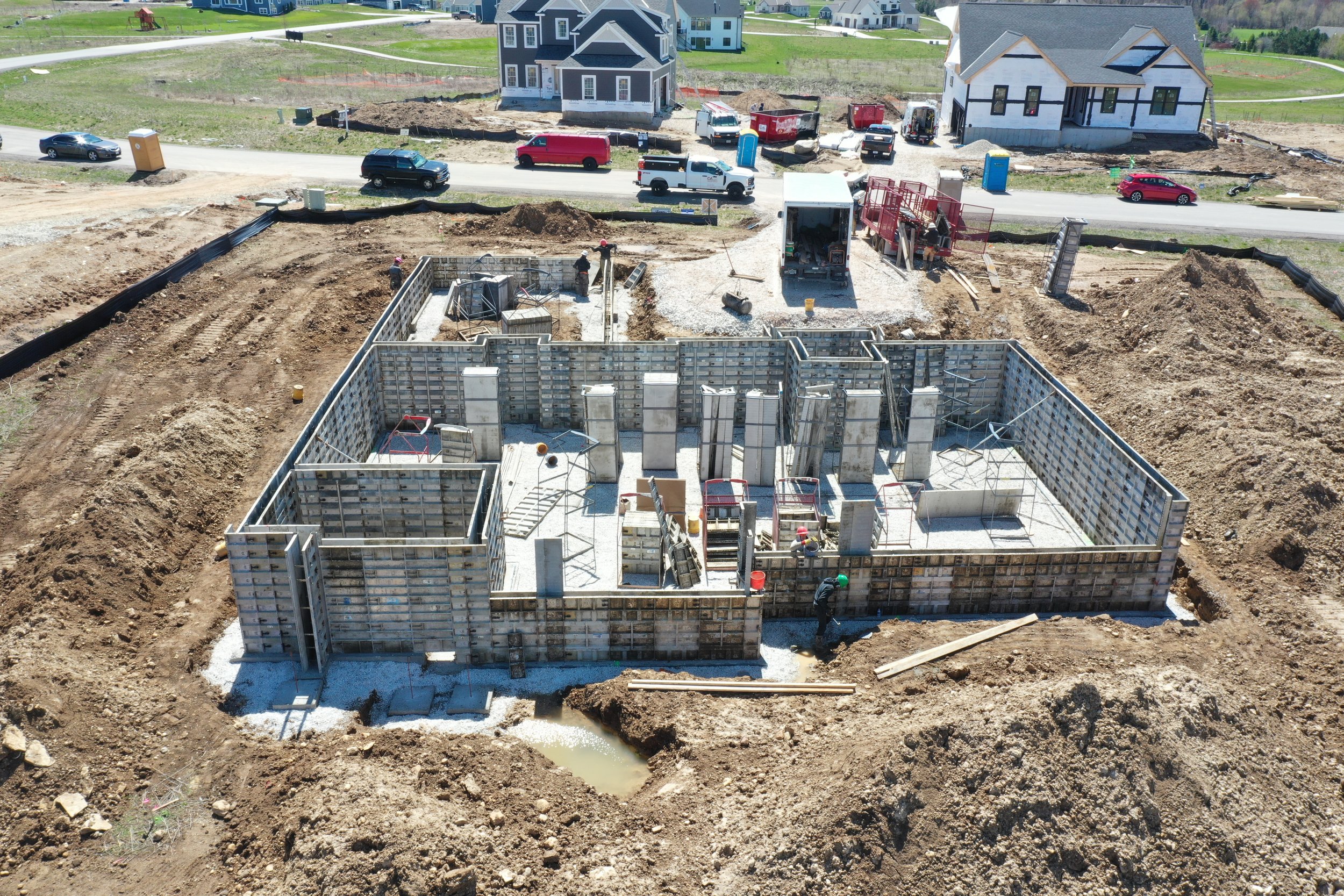Foundations
In southeastern Wisconsin, building on a solid, structurally-sound foundation is one of the most critical aspects of new home construction.
Don’t Cut Corners in the Basement
Poured concrete is the best choice for our climate and soil conditions. A poured foundation is:
Stronger and more durable
Designed to control cracking and resist water penetration
More flexible for unique home shapes/designs
Comparable to the cost of a block foundation once the block foundation is backfilled with stone (as required by code)
Integra® Foundation System, specially designed by Coello & Associates for James Craig Builders is exclusively used in our home builds. Combined with the poured in place draintile system, it is the strongest and most reliable foundation system available. The Integra™ Foundation is also eight inches taller than a traditional 11-course block foundation wall, creating a more spacious basement without additional cost.












How Strong is Strong Enough?
Concrete strength is measured in pounds per square inch (psi), and building codes mandate that foundation concrete must be at least 3,000 psi. Integra® Foundation concrete has a rating of 4,000 psi, which creates a much stronger wall.
Another component that impacts a foundation’s strength is the amount of steel rebar reinforcement. In addition to horizontal rebar, which helps minimize shrinkage cracking, we add vertical rebar, which makes the foundation wall substantially stronger.




